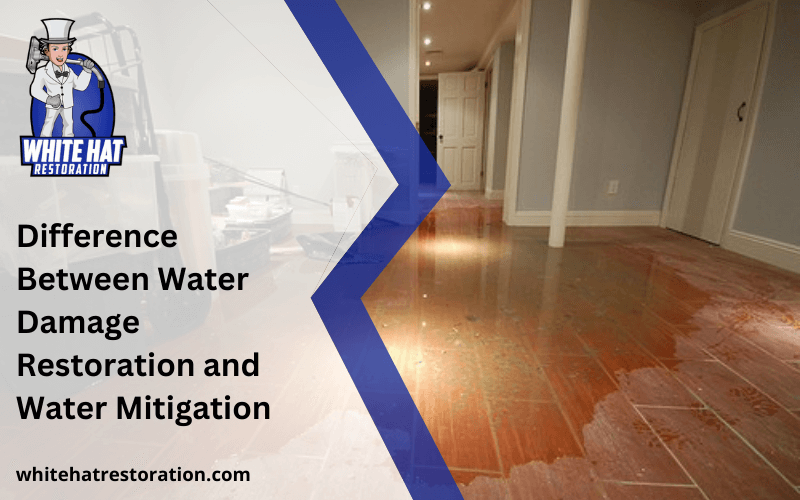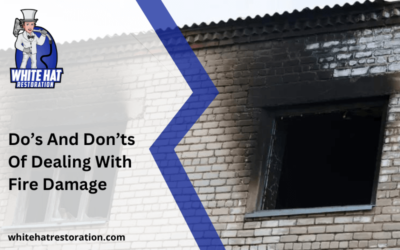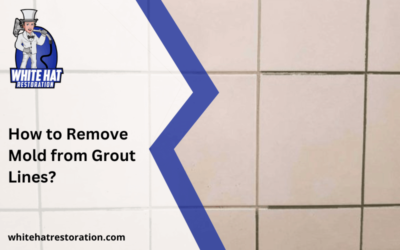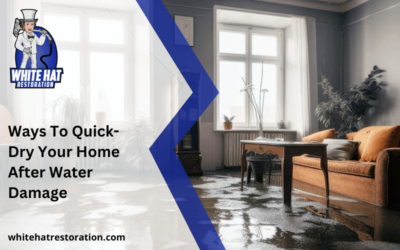Water damage is a common problem faced by Indianapolis residents. It can be unexpected, and sudden, causing long-lasting damage, which affects your well-being and peace of mind.
However, when it comes to addressing water damage, property owners often get confused between water damage restoration and mitigation.
Both of these methods aim to remove water as soon as possible and bring your property back to pre-damage conditions. But depending on the extent and severity of damage there are some differences between the water damage restoration and mitigation process.
In this blog, we will discuss both of these processes and understand how they differ.
What is Water Damage Mitigation?
Water damage mitigation is the primary response after water damage to your property. The goal of damage mitigation is to remove the standing water as soon as possible and minimize the damage to your property and belongings. It also includes preventing any further damage to the space due to water intrusion.
The water mitigation process includes:
⇒ Inspection
First, experts inspect your property to determine what type of water they are dealing with. The mitigation process will differ depending on the type of wastewater (clean, gray, or black). They also study the extent of the damage to ensure it doesn’t go beyond that.
⇒ Water Extraction
Next, we remove the excess water from your property using specialized equipment like pumps, fans, vacuums, and dehumidifiers. Drying out the water prevents it from spreading to other parts of your property and causing damage.
⇒ Removing Damaged Items
In the next phase of water mitigation, experts inspect and discard water-soaked items like furniture, carpets, and dry walls. Doing so is crucial as these items are at an increased risk of mold growth, which can lead to mold allergies and other health risks.
⇒ Temporary Fixes
Finally, the experts will board up the damaged windows and walls for a quick fix before the restoration starts. It will provide temporary protection and insulation to your home before permanent repairs.
What is Water Damage Restoration?
Water damage restoration is the process of rebuilding your property after water damage. It usually happens after water damage mitigation and involves trained experts using equipment and techniques to restore your home or business to pre-damage condition.
Moreover, timely water damage restoration can help you save money and prevent mold growth from your property. A proper water damage restoration process involves the following.
⇒ Water Extraction
The first step of water restoration is removing the leftover water. Here, the experts try to remove water from water-soaked items like carpets to try and salvage them.
⇒ Debris Removal
After that, they remove the damaged building materials like pieces of walls, floor, and ceiling. They also remove the damaged carpet padding to help with drying in the next step.
⇒ Final Dry Out
Next, we place air movers and dehumidifiers in strategic locations on your property for faster drying and to remove the excess moisture. Generally, it takes just a few days for your place to dry completely after this.
⇒ Disinfecting the Property
There is a huge concern about mold and bacterial growth after water damage. Experts sanitize and disinfect all the water-soaked areas while they dry to reduce the chances of fungus and other contaminants growing on your property. The process also kills any existing mold spores, ensuring a mold-free home.
Check out tips to prevent mold growth in Indianapolis.
⇒ Restoring Valuables
Water damage can permanently ruin some items, but experts can salvage some of your valuables with their latest disinfection and restoration technology. Here, they salvage the saveable items like hard goods and electronics and take them off-site to restore.
⇒ Reconstructing Damaged Walls, Flooring and Ceiling
In the last step, restoration professionals verify the dryness of your property and, depending on the severity of the damage, perform the repairs themselves or get you in contact with building contractors to fix major structural damage.




